
LMS Integration with Collaboration Tools
Learning Management Systems (LMSs) simplify education and training, but when integrated with collaboration tools like Microsoft Teams or Slack, they become even more effective. Here's what you need to know:
- Moodle: Offers integration with Microsoft Teams (single sign-on, course sync, assignment management) and Slack (real-time updates, direct messaging). Custom API options allow tailored workflows.
- Blackboard Learn: Connects with Microsoft Teams for messaging and scheduling. Supports APIs and LTI 1.3 for custom integrations and third-party tools.
- Google Classroom: Works seamlessly with Google Workspace tools (Google Meet, Drive, Calendar) and supports third-party integrations. Mobile app features include push notifications and offline access.
- AbsorbLMS: Limited public details on collaboration tool integration; consult official documentation for specifics.
Quick Comparison
| Platform | Collaboration Tools | Key Features | Mobile Access |
|---|---|---|---|
| Moodle | Microsoft Teams, Slack | Single sign-on, course sync, assignment management, custom API options | Yes |
| Blackboard Learn | Microsoft Teams | Messaging, live collaboration, APIs, LTI 1.3 framework | Yes |
| Google Classroom | Google Workspace | Google Meet, Drive, Calendar, third-party tools, mobile notifications | Yes |
| AbsorbLMS | Limited info | Details on integration not publicly available; consult official resources | Yes (details unclear) |
Conclusion
Choose an LMS that integrates well with the tools you already use. Look for features like real-time updates, file sharing, and mobile access to enhance learning and communication. For AbsorbLMS, check their documentation for the latest integration details.
Canvas LMS Integrates with Microsoft Teams | Canvas ...
1. Moodle Integration Options
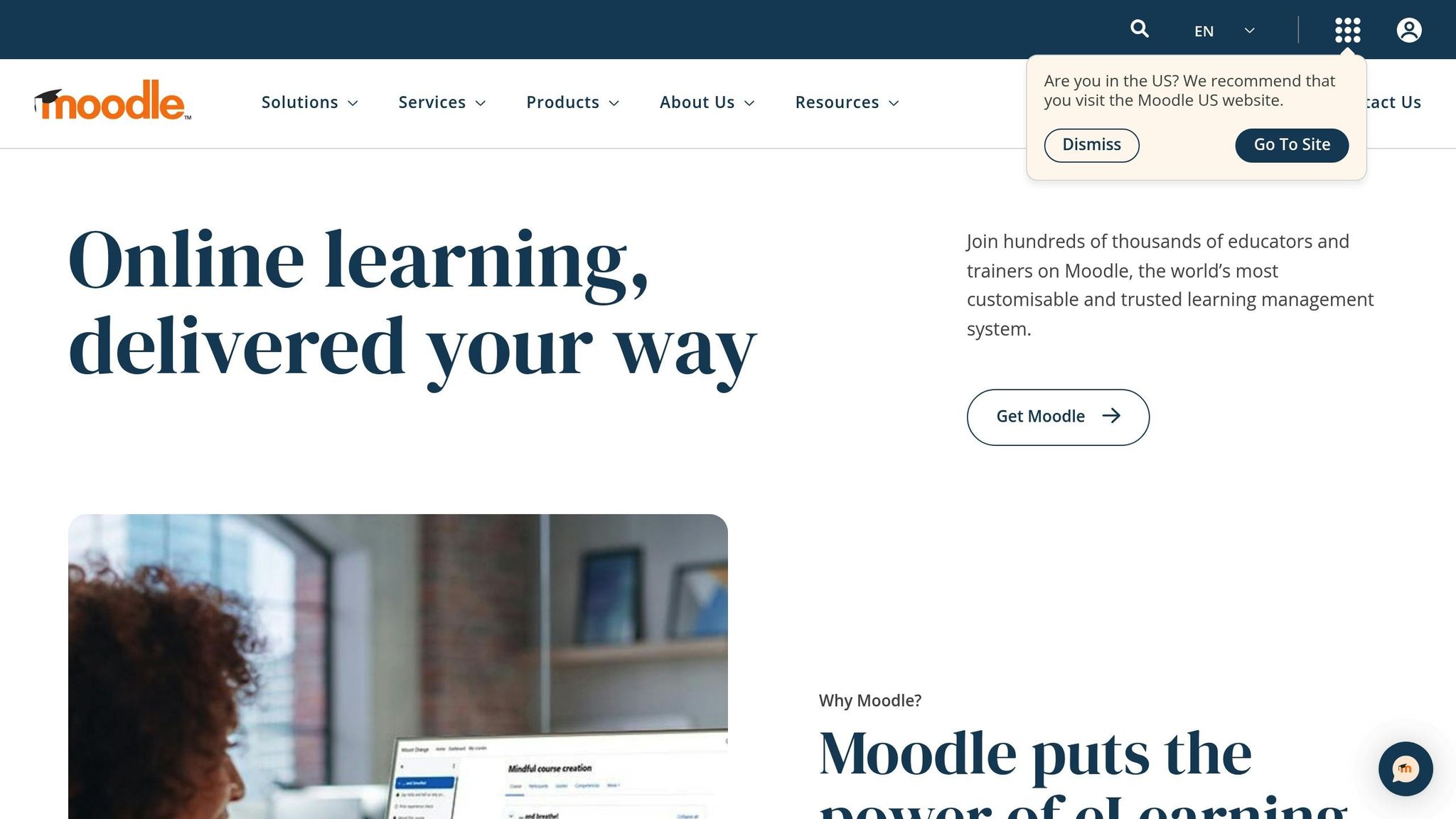
Moodle offers various ways to integrate with collaboration tools, making it a great choice for educational institutions. Since the release of version 3.9 in June 2020, Moodle has expanded its features to connect with tools that improve teamwork and communication in learning environments.
Microsoft Teams Integration
Moodle works smoothly with Microsoft Teams, simplifying course access and management. Some key features include:
- Single Sign-On (SSO): Users can log in through Teams without needing separate credentials.
- Course Synchronization: Moodle courses automatically link with Teams channels.
- Assignment Management: Students can submit assignments via Teams, while instructors grade them in Moodle.
- File Sharing: Integrated with OneDrive and SharePoint for easy sharing of resources.
Slack Integration
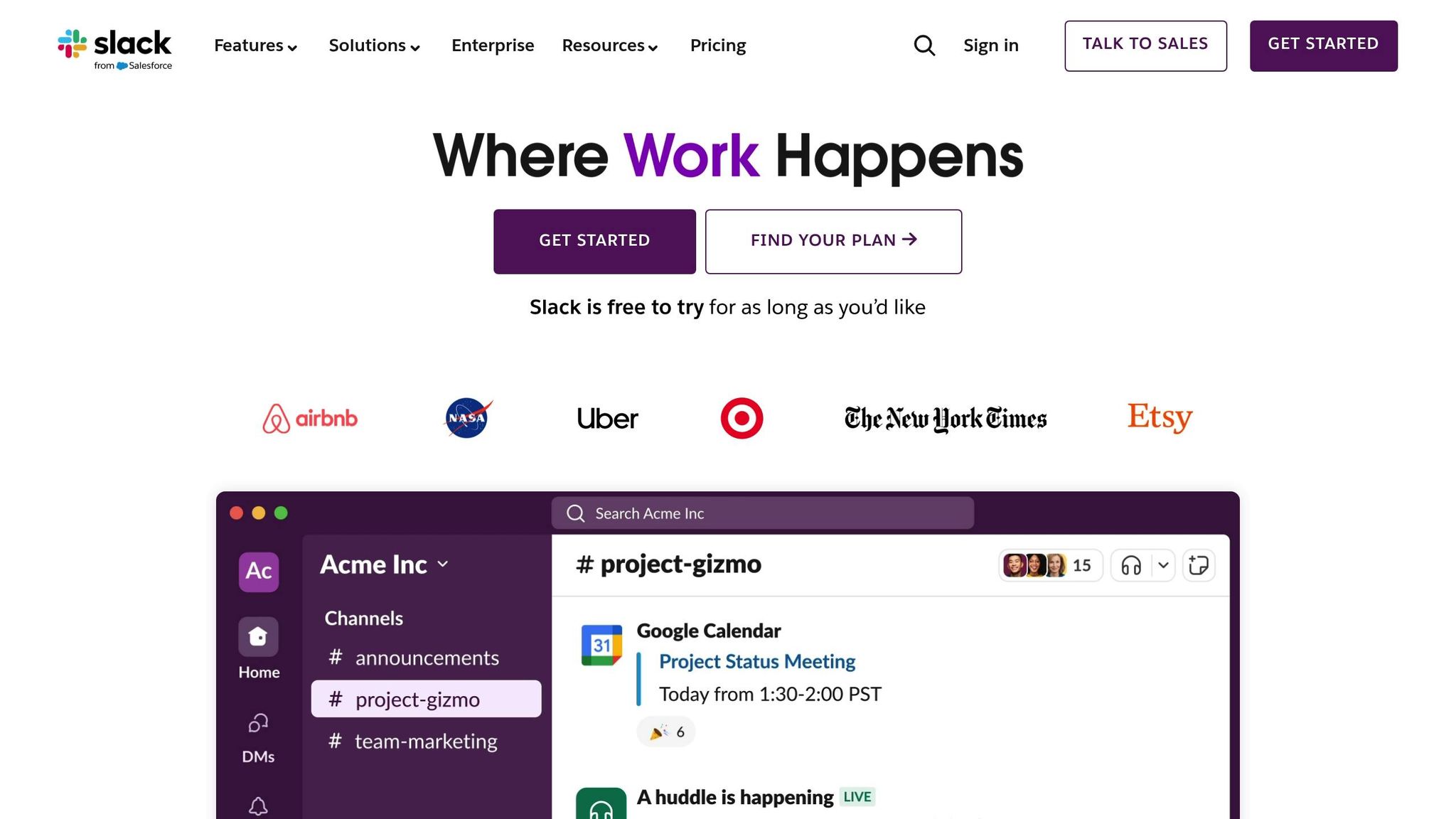
Slack integration with Moodle helps course participants stay updated and connected. It provides real-time updates and communication tools, including:
- Course Notifications: Alerts about announcements and assignment deadlines in specific Slack channels.
- Direct Messaging: Easy communication between students and instructors within the Moodle framework.
- Activity Logs: Automated updates about course activities sent to designated Slack channels.
Custom API Integration Options
For unique collaboration needs, Moodle's REST API enables tailored integrations. Features include:
- Webhooks: Automate workflows with trigger-based actions.
- Real-Time Syncing: Keep data updated across platforms instantly.
- Authentication Support: Works with different authentication methods to ensure secure access.
These tools allow institutions to adjust Moodle to their specific operational and educational needs.
2. Blackboard Learn Connection Methods
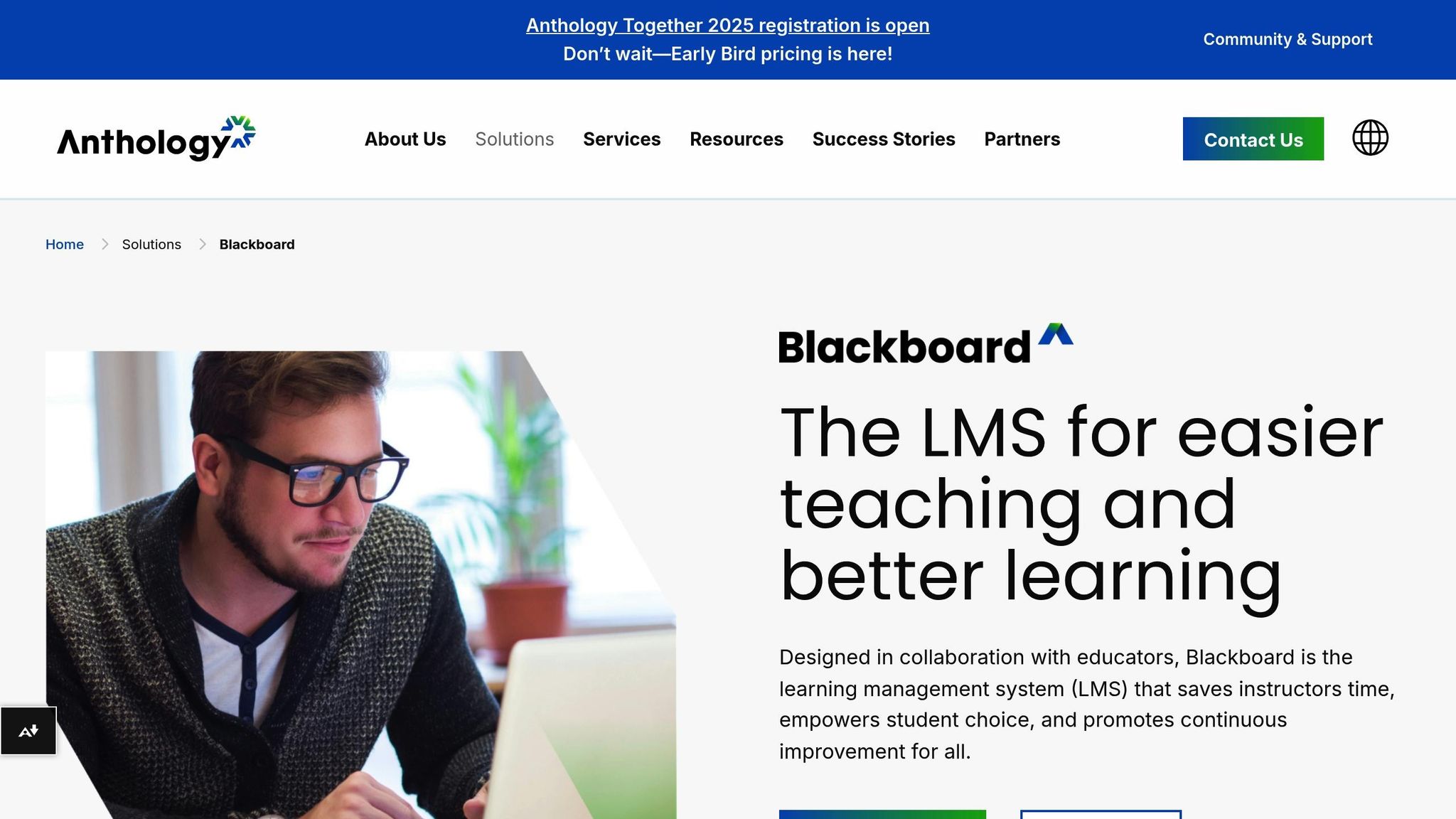
Blackboard Learn offers multiple ways to connect with collaboration tools, making it easier to communicate and manage courses in a digital learning environment.
Microsoft Teams Integration
Blackboard Learn integrates directly with Microsoft Teams, allowing for seamless messaging, live collaboration, and automated scheduling. This connection simplifies course communication and keeps everyone on the same page.
Collaboration Tool API
The platform's API framework allows secure and real-time data sharing between systems. It also supports custom integrations with other collaboration tools, ensuring encrypted communication and up-to-date information across connected platforms.
LTI Integration Framework
Using the LTI 1.3 framework, Blackboard Learn connects with third-party tools for content and assessments. This setup makes accessing resources simple while ensuring data privacy and maintaining academic standards.
Mobile Integration
Blackboard Learn's mobile features provide on-the-go access to courses and updates. Push notifications help students and instructors stay informed no matter where they are.
These connection methods make Blackboard Learn a practical choice for managing courses and fostering communication in today's digital education landscape.
sbb-itb-1e479da
3. Google Classroom Connectivity
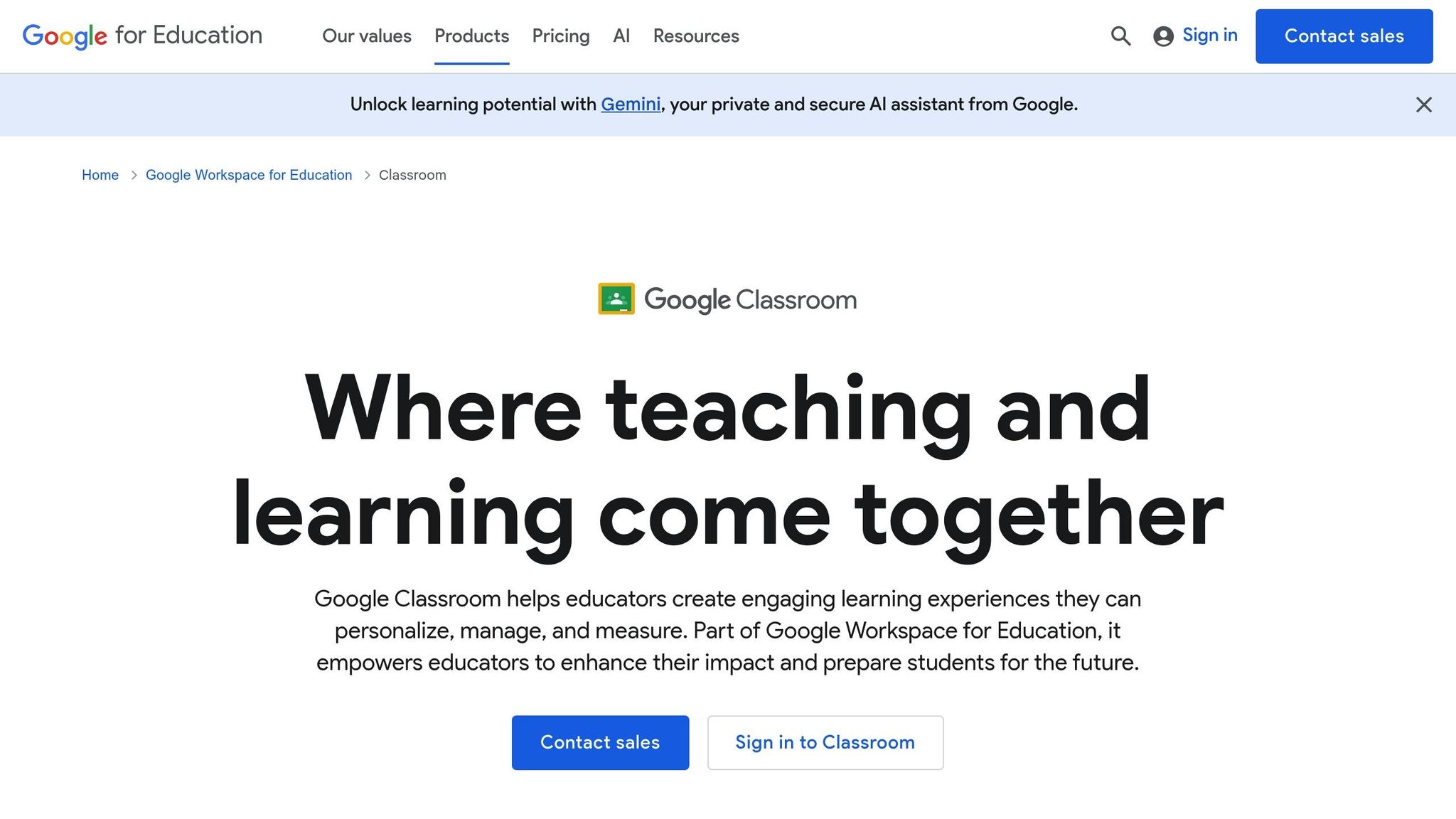
Google Classroom offers a wide range of integration options, making it a central tool for digital learning. With seamless connections to Google Workspace and third-party tools, it creates an efficient and flexible environment for educators and students.
Built-In Google Workspace Tools

Google Classroom works effortlessly with Google Workspace tools, creating a streamlined experience for teaching and learning. Key features include:
- Google Meet: Host virtual classes with built-in video conferencing.
- Google Drive: Organize and share files efficiently.
- Google Docs: Collaborate on documents in real time.
- Google Calendar: Automatically schedule classes and track assignments.
These tools provide a strong foundation that can be expanded with additional integrations.
External Tool Integration
Google Classroom also connects with third-party tools, offering more flexibility. This allows educators to:
- Add content from external platforms directly to assignments.
- Share resources securely without compromising student data.
- Use third-party tools while protecting student privacy.
- Monitor student engagement across different platforms.
Mobile App Features
The mobile app ensures that students and teachers stay connected, even on the go. It includes:
- Push Notifications: Get instant updates for assignments and announcements.
- Offline Access: Work on tasks without an internet connection.
- Cross-Device Sync: Switch seamlessly between devices without losing progress.
Communication Through the Stream
The Stream feature simplifies class communication by centralizing updates and discussions. It supports:
- Announcements: Share class-wide updates quickly.
- Discussion Threads: Keep conversations organized by topic.
- Private Comments: Enable one-on-one communication between teachers and students.
- Resource Sharing: Distribute learning materials with ease.
Assessment Tools
Google Classroom makes grading and assessments more efficient with features like Google Forms for quizzes. Here’s how it helps:
| Feature | Function | Benefit |
|---|---|---|
| Auto-grading | Scores multiple-choice quizzes automatically | Saves time for teachers |
| Rubric Tools | Attach grading criteria to assignments | Ensures consistent evaluations |
| Grade Sync | Updates the grade book automatically | Reduces administrative tasks |
These features make Google Classroom a versatile platform for managing both teaching and learning, offering a secure and user-friendly experience for everyone involved.
4. AbsorbLMS Connection Features
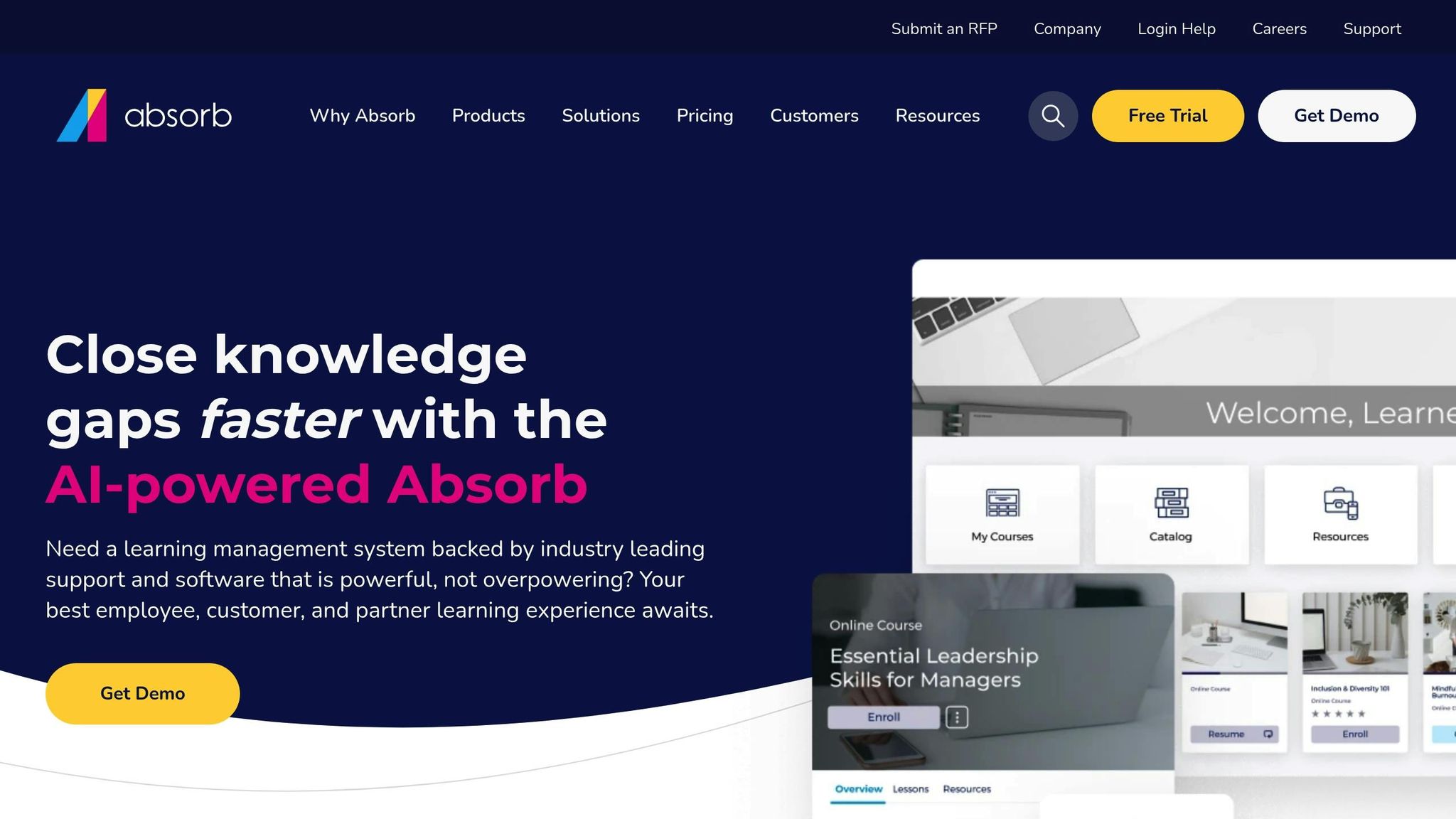
AbsorbLMS doesn't offer much publicly available information about its integration with collaboration tools like Slack or Microsoft Teams. Unlike platforms such as Moodle, Blackboard Learn, and Google Classroom, the details on this are limited and unverified. To get the most accurate and up-to-date information, it's best to refer directly to the official AbsorbLMS documentation or reach out to their support team. This lack of transparency highlights the importance of consulting their resources directly for integration specifics.
Platform Comparison Results
Our comparison of various platforms underscores some important differences in how they integrate with collaboration tools. These differences can significantly affect workflow efficiency and how users interact with the system. When evaluating platforms, it's essential to consider both how courses are delivered and how real-time communication is handled.
Some platforms come with built-in collaboration features, while others rely on additional tools to expand their functionality. Features like mobile access and instant notifications play a big role in keeping users engaged, especially as mobile learning becomes increasingly important in education and training today.
Summary and Recommendations
Choose an LMS that offers smooth connectivity, works well with other tools, and is easy to navigate. Built-in integrations should include features like real-time notifications, file sharing, and instant messaging to make the system more efficient. This creates a strong base for adding tools that improve the learning experience.
QuizCat AI turns course materials into engaging study aids like flashcards, quizzes, and even podcasts, promoting collaborative learning.
"I was drowning in notes before I found this tool. Now, it turns everything into flashcards, quizzes, and even podcasts! Studying has never been this easy. 🚀 Highly recommend!" - Emily Carter
Here are some practical tips for successful LMS implementation:
- Ensure both desktop and mobile access
- Choose a system that can grow with your needs
- Prioritize secure and easy-to-use authentication
As technology standards change, organizations should regularly review their systems and adjust their strategies. When set up correctly, these systems improve teaching and learning while simplifying administrative work.
